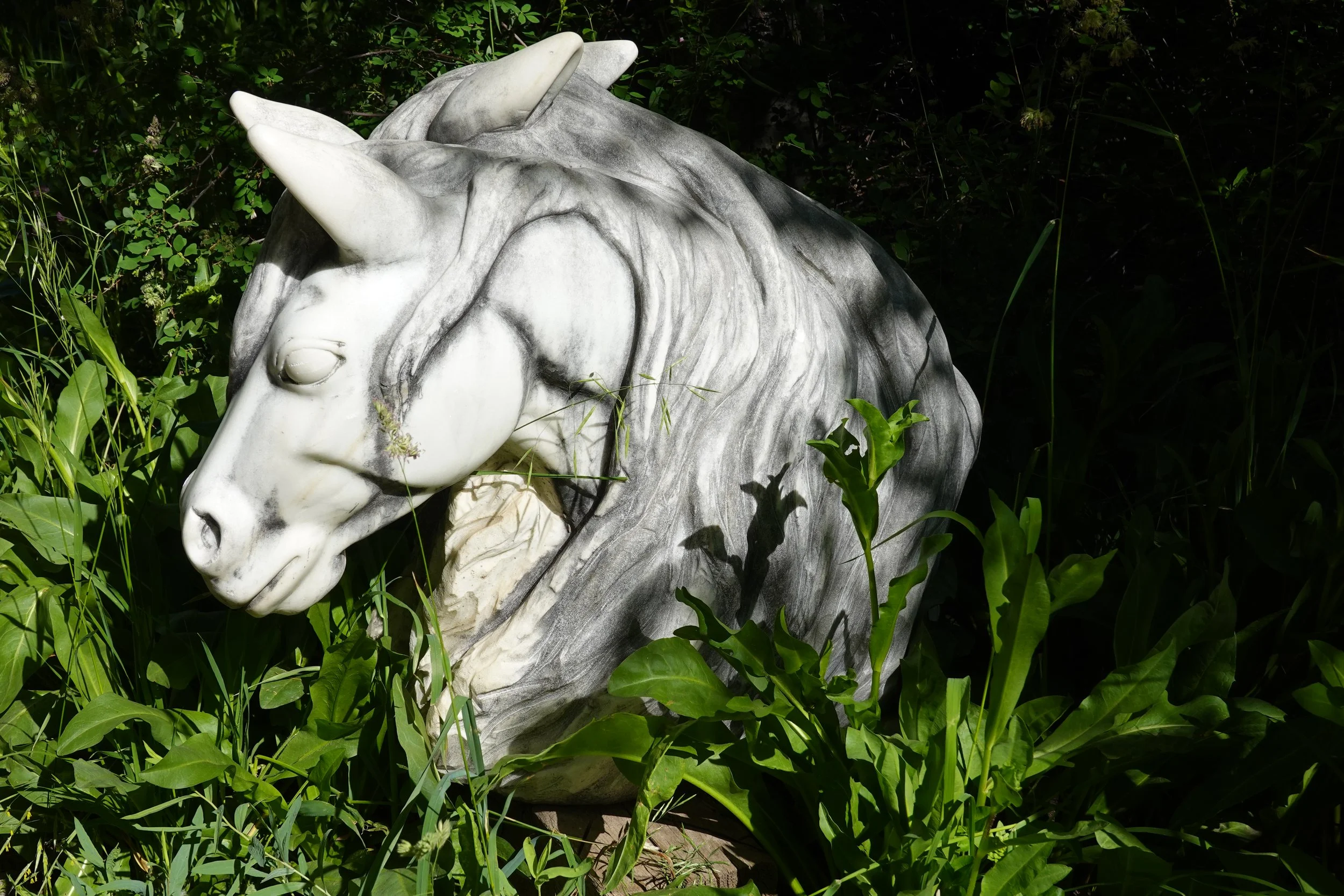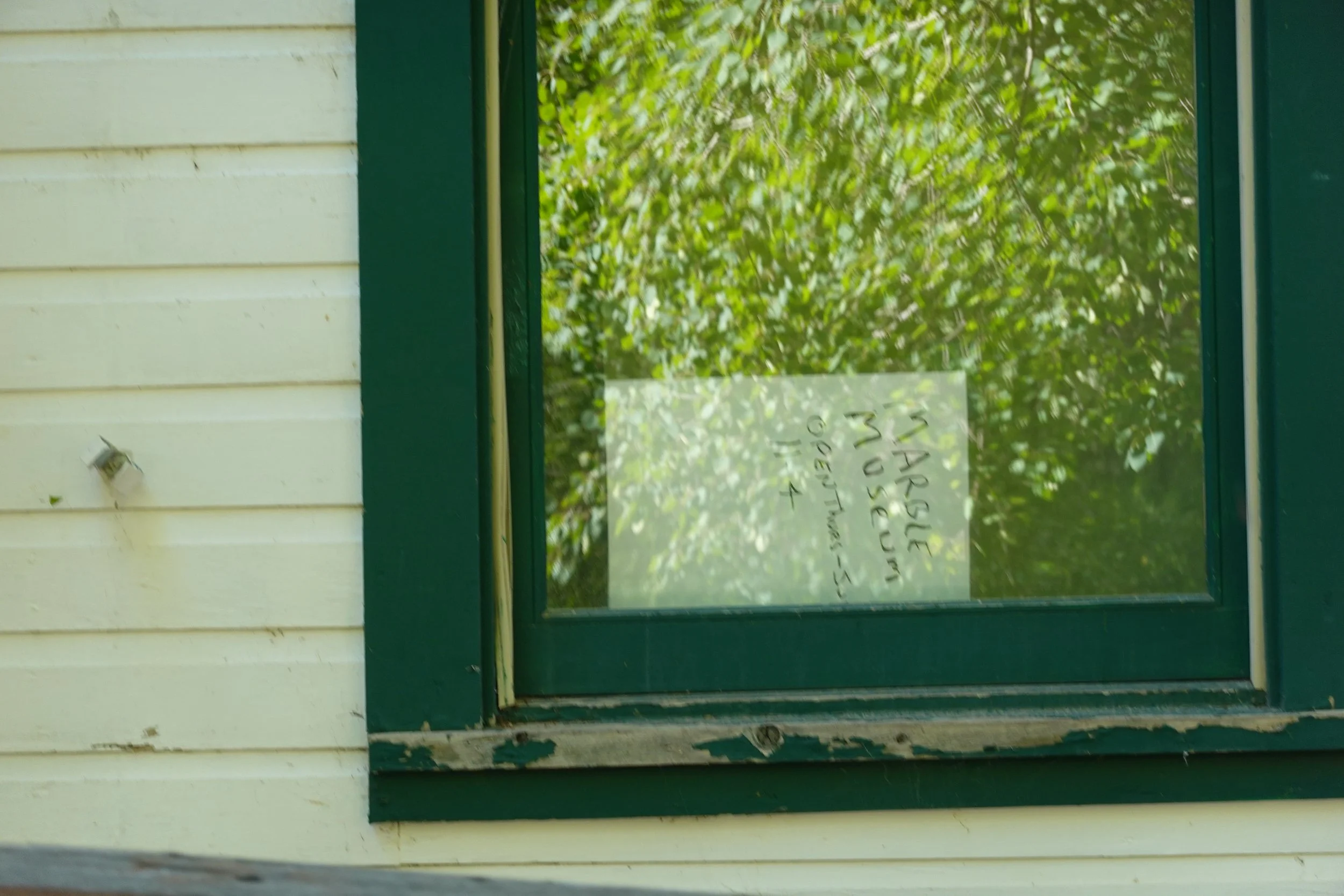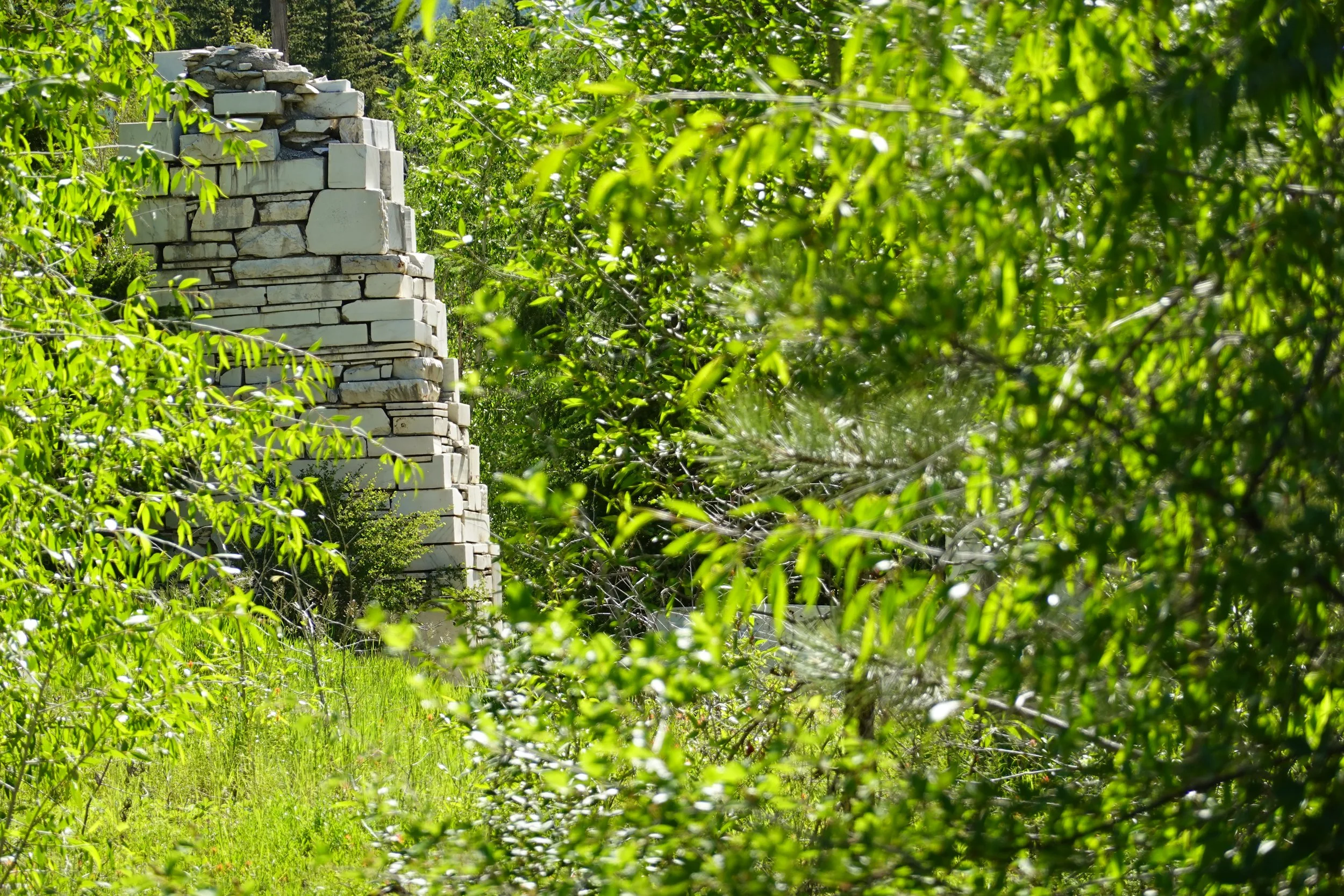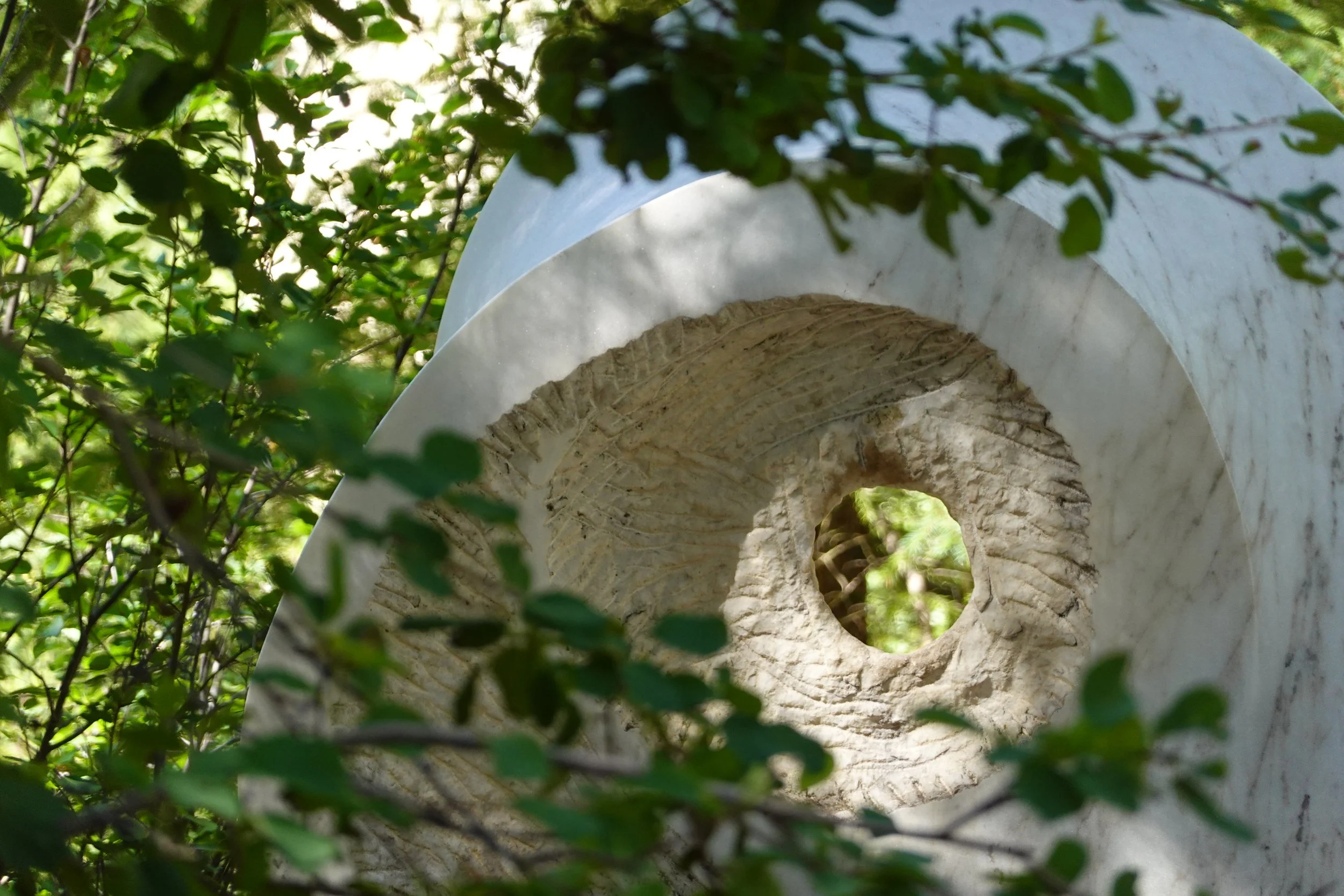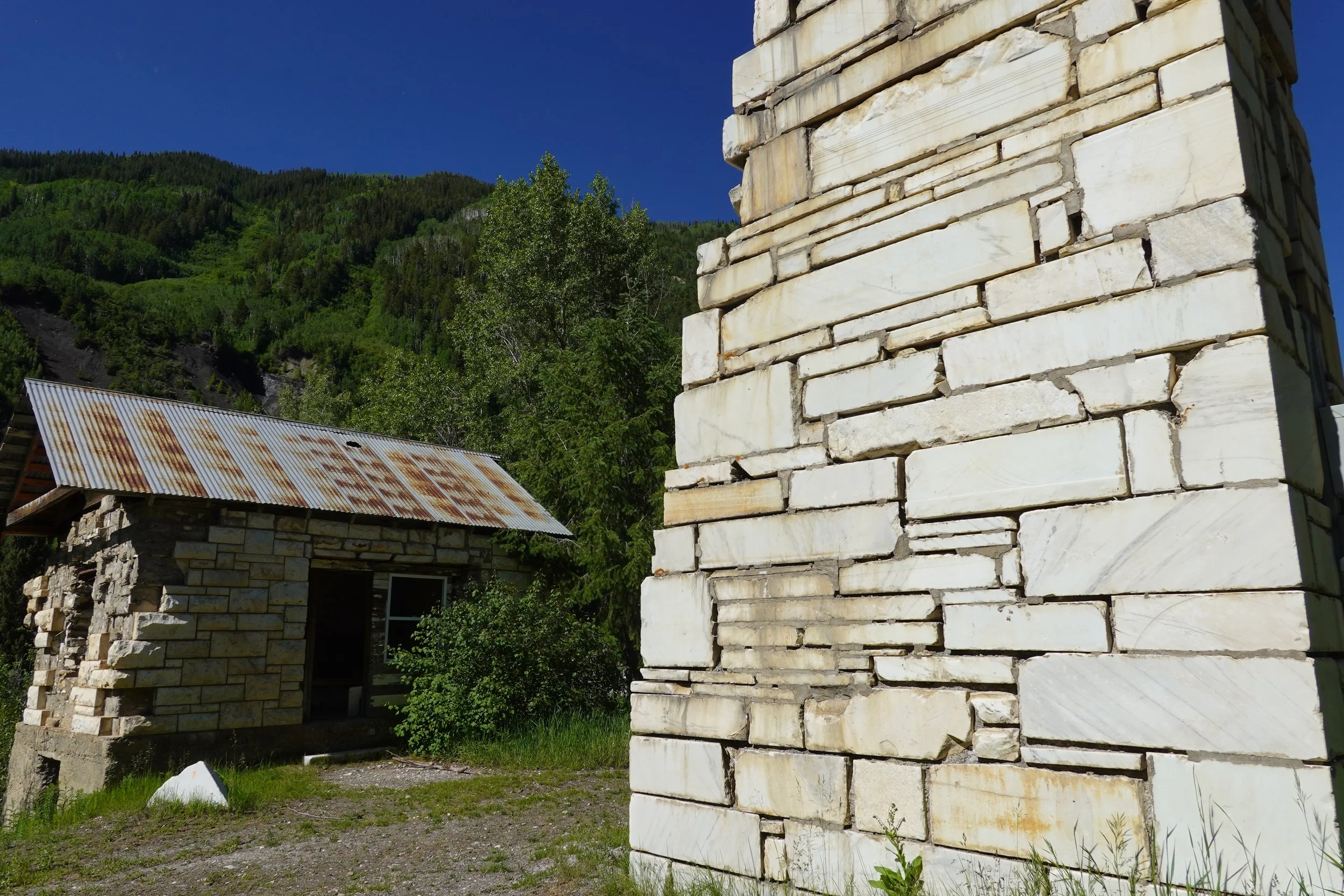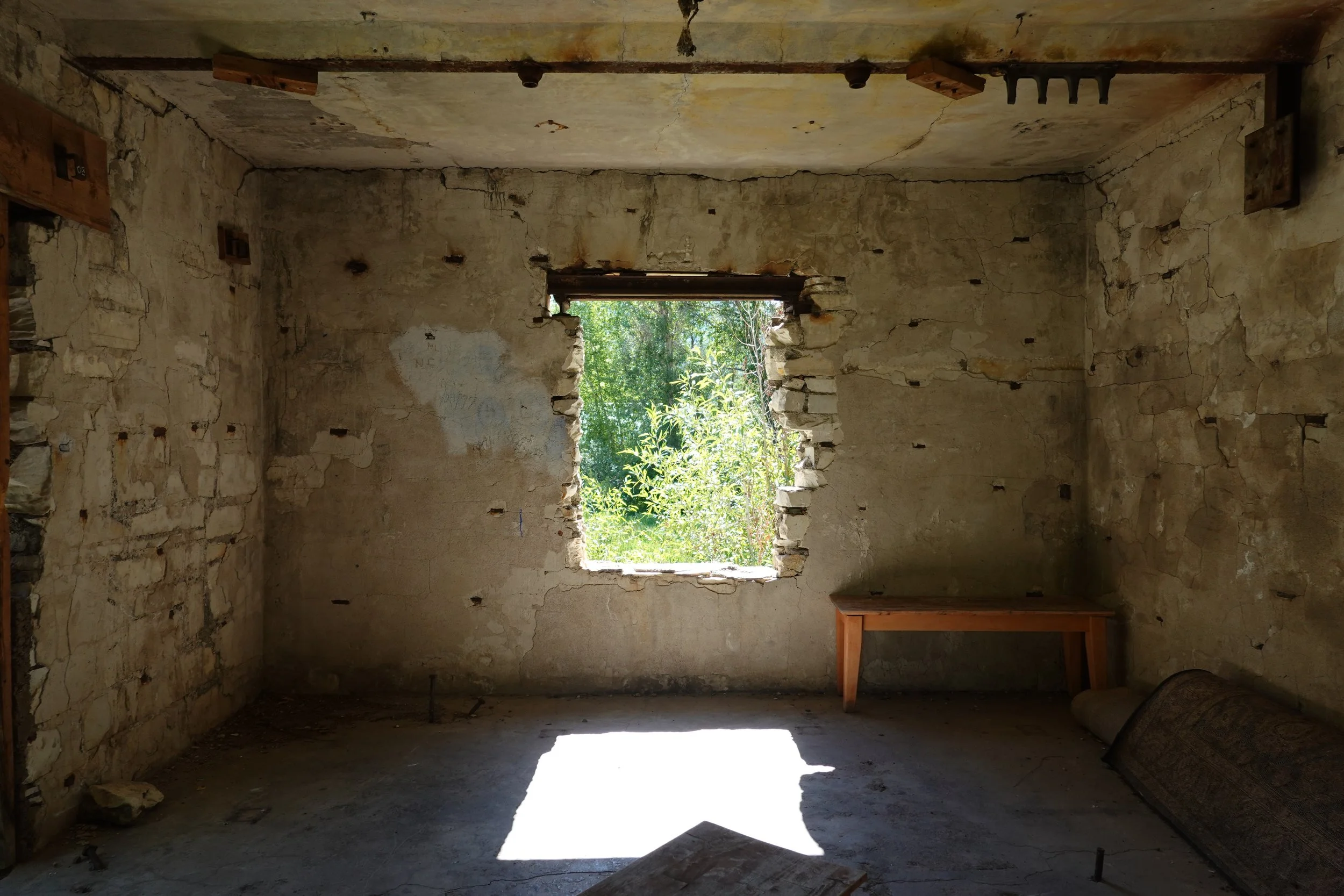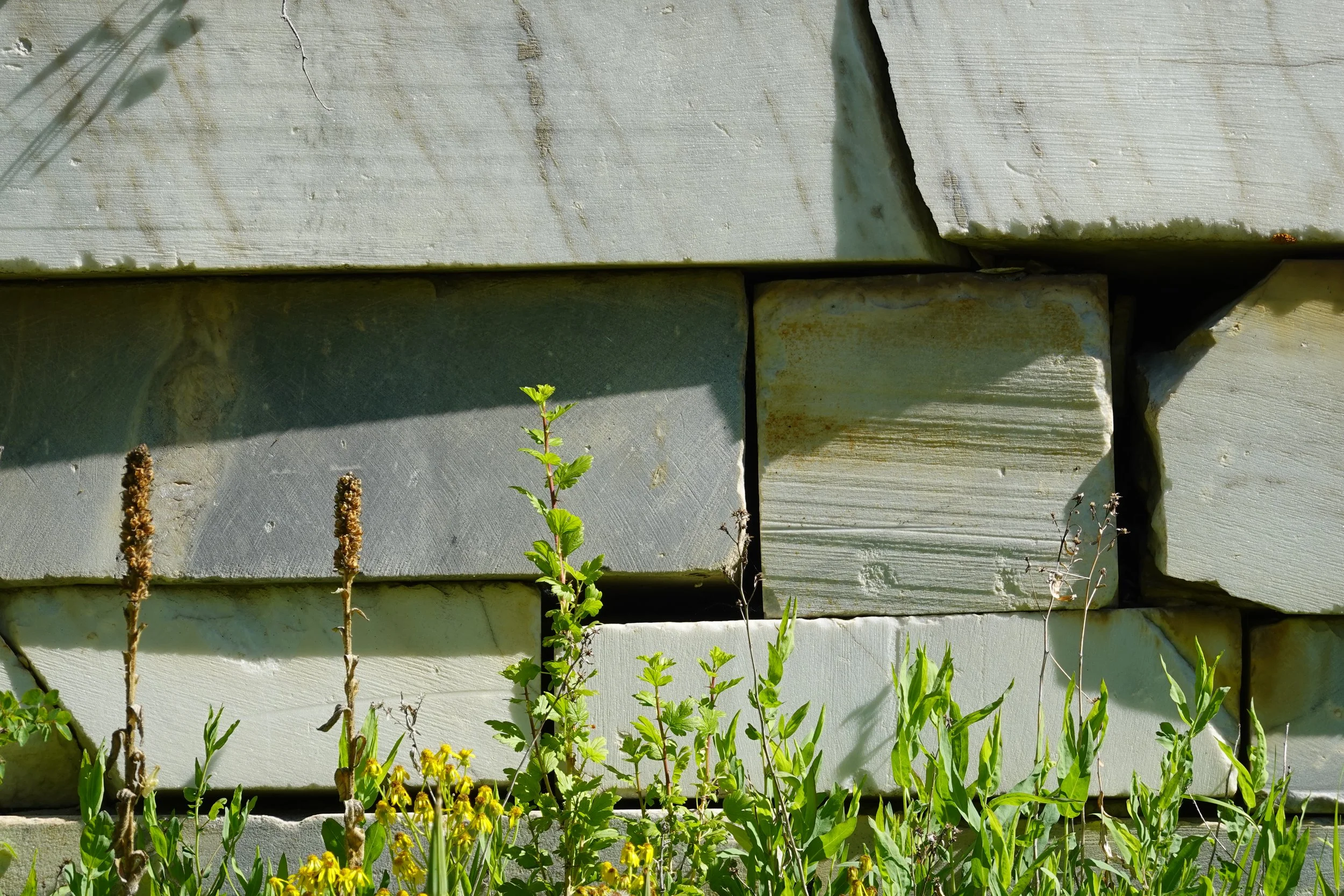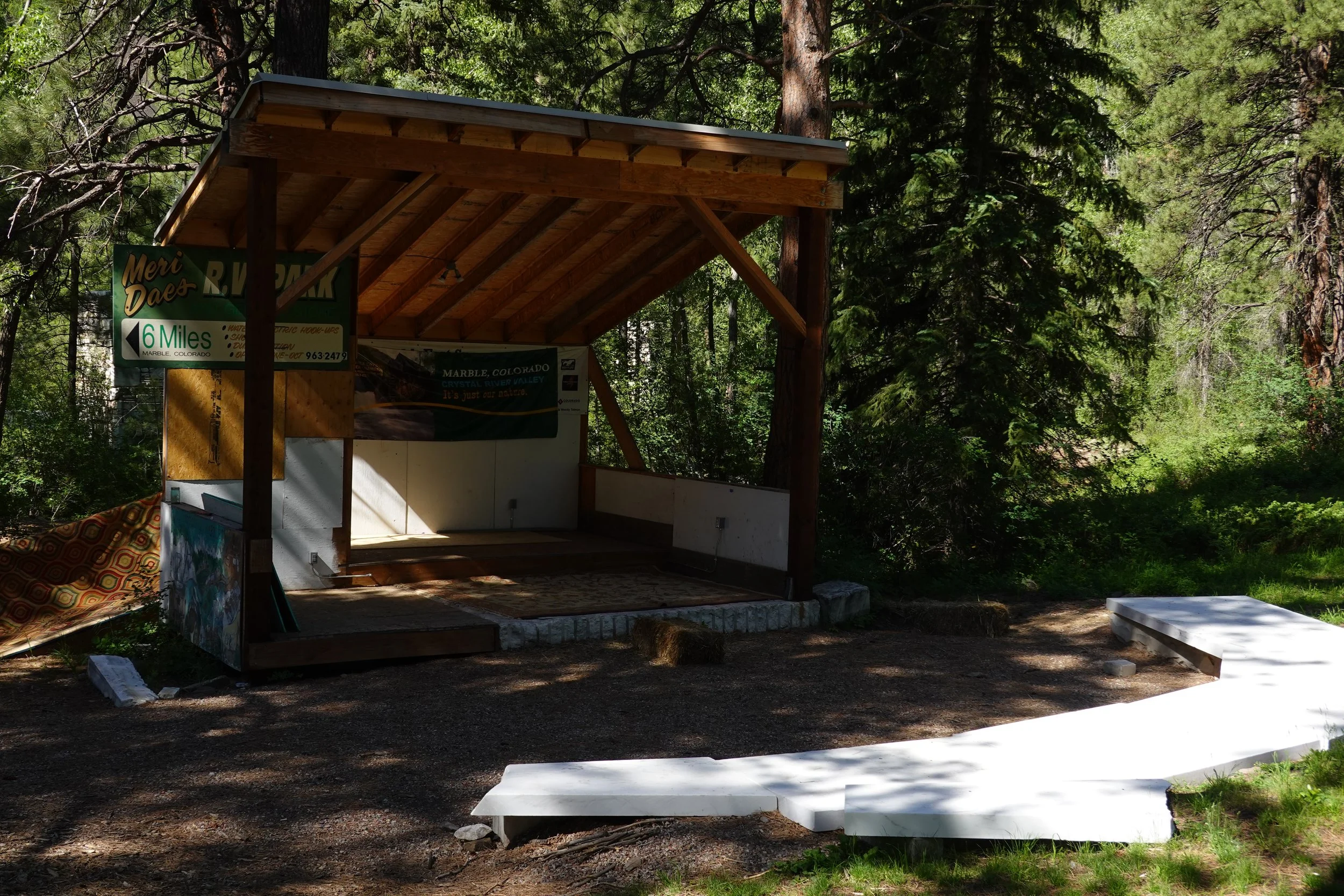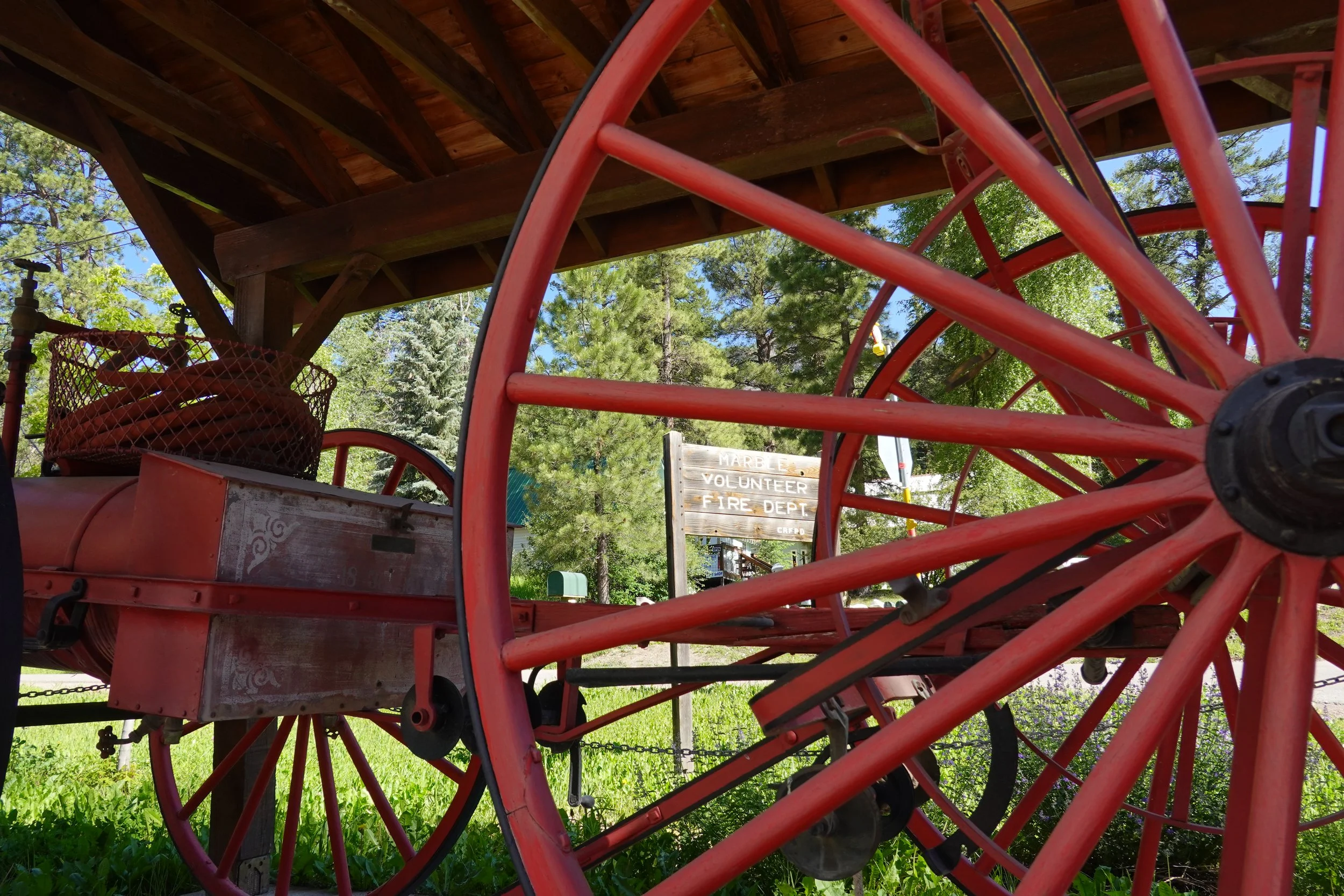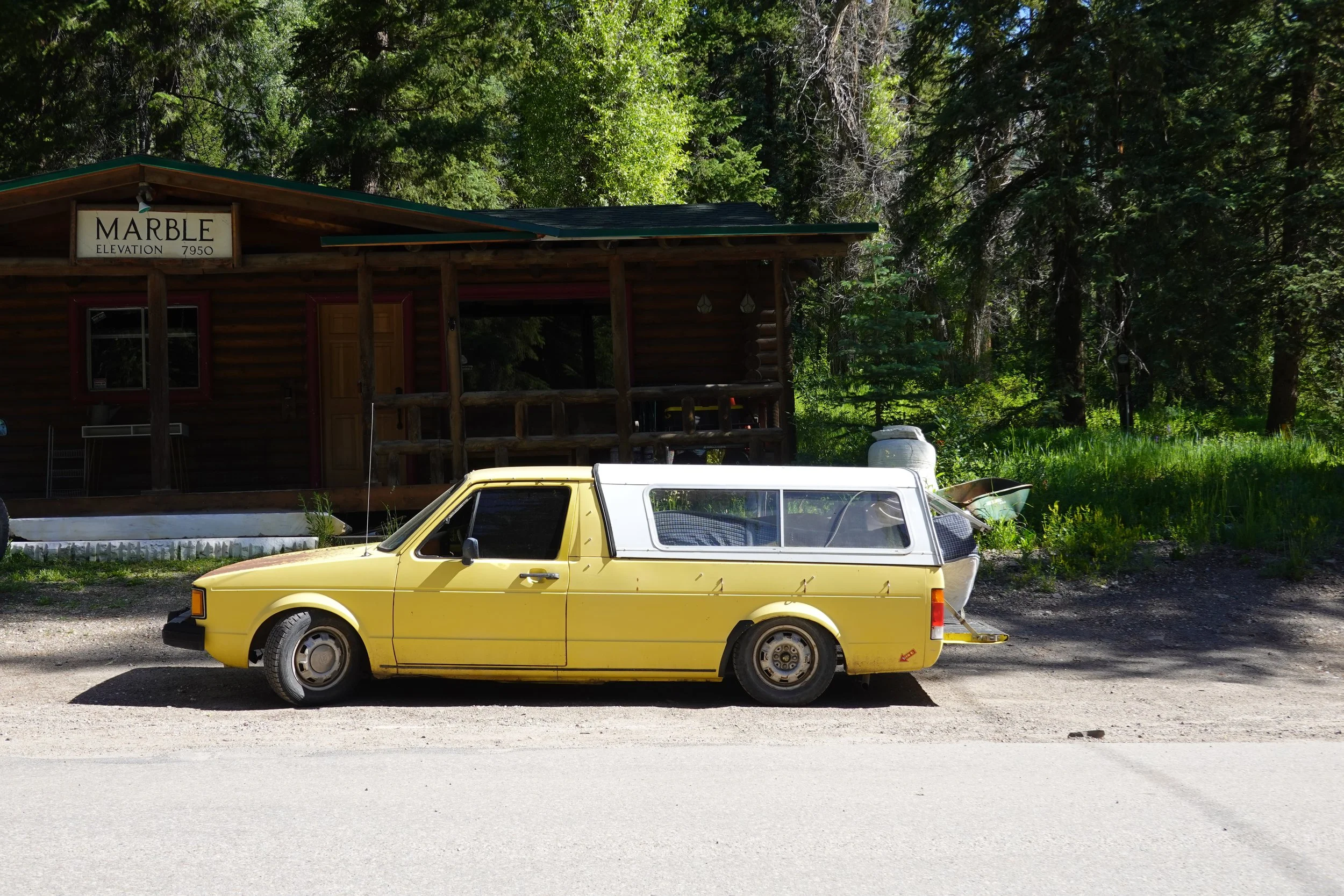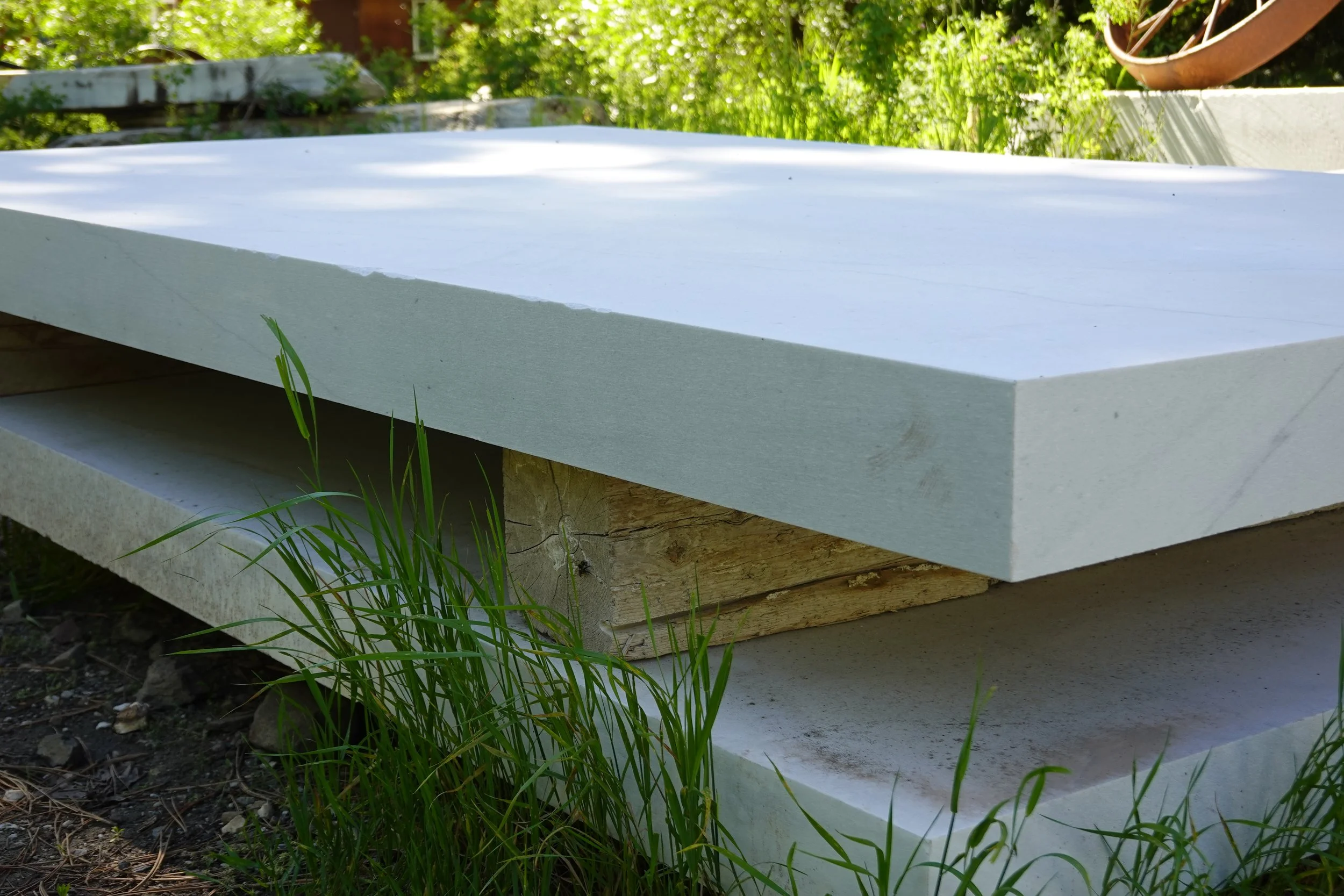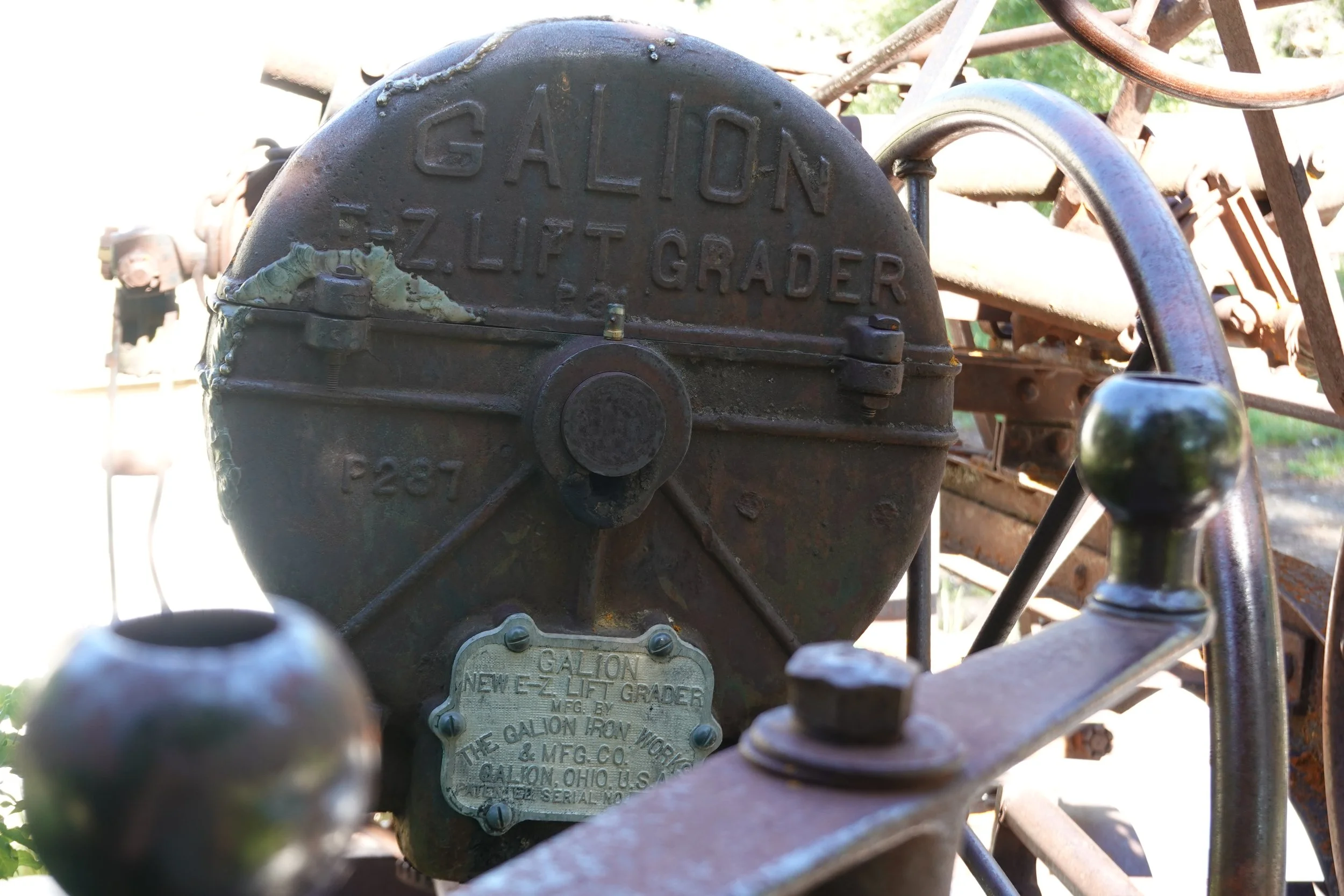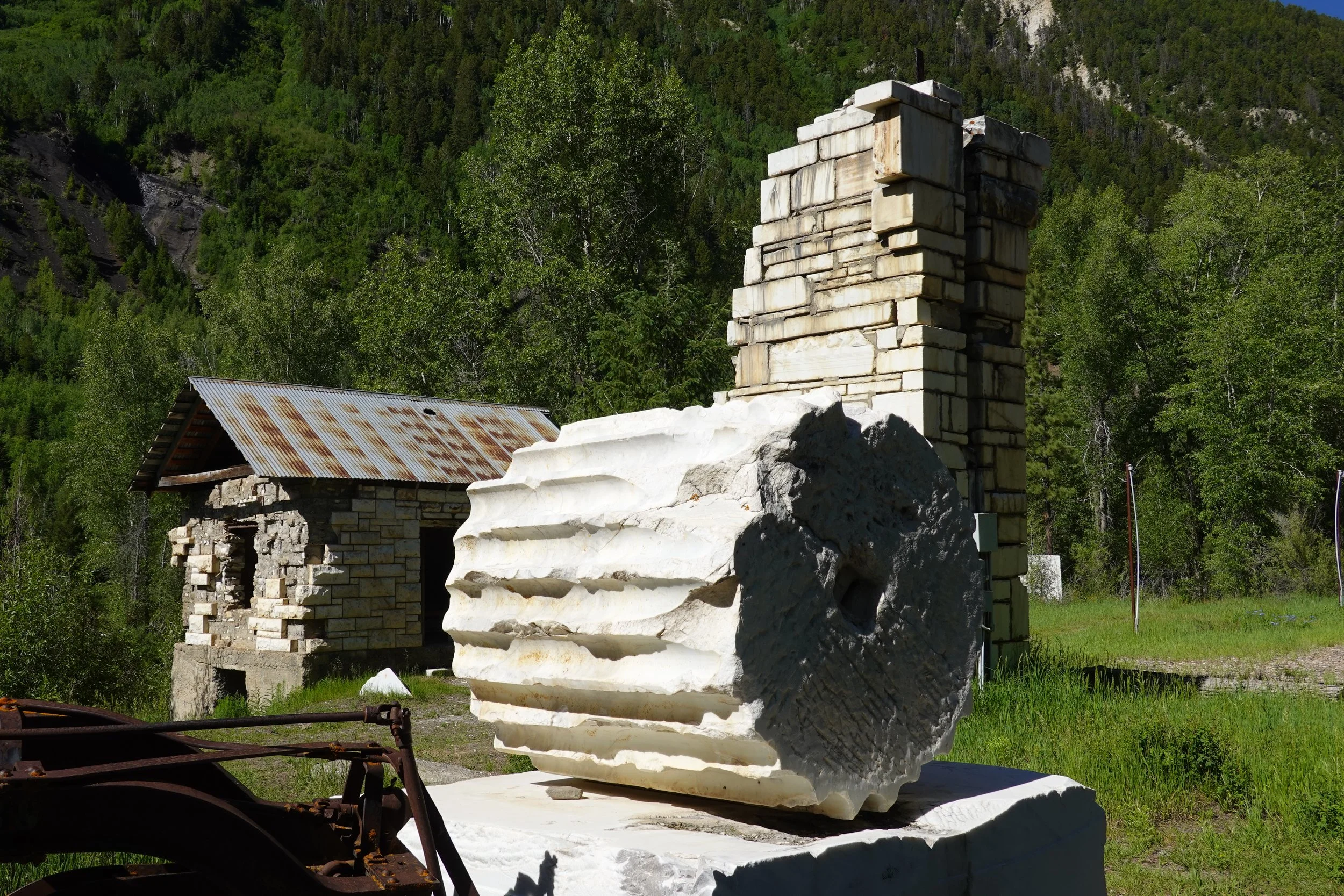Marble
Marble is a tiny town tucked high in the Crystal River Valley, a forgotten seam in Colorado’s rugged fabric that once yielded some of the purest, most sought-after stone on Earth. This speck of a town helped carve the national identity—literally. The marble that lines the Lincoln Memorial was cut and pulled from these very mountains, 9,300 feet above sea level.
Massive blocks, some weighing over a hundred tons, were cut using high-pressure water, hand drills, and dynamite. Narrow-gauge rail lines clung to the mountain like veins, carrying the blocks down to the valley floor and eventually onto a standard rail line that connected to the rest of the country.
Though nature is slowly reclaiming the site, the bones of the old mill are still visible. Walking through what was once the largest marble finishing mill in the world, it’s not hard to imagine the past. The mill once sprawled across five acres, filled with gang saws and polishers that brought raw blocks to a gleaming finish. Run by workers lodged in cramped, wood-framed bunkhouses that groaned in the winter winds working long and dangerous days. In the cold months, snow piled waist-deep, and inside the mill, marble dust coated everything. They said the air was so thick with it, it looked like a foggy night in London. Evenings meant whiskey, cigarettes, harmonicas. Fights weren't sent to some fat HR lady with a double chin and stinky armpits but rather settled right then and there, amongst the marble colosseum.
Now lay huge rectangular slabs amidst the mill with random pillars reaching for the open sky. The skeleton of the main building still remains, open to the weather and whatever else finds itself amongst its bones. I ran my hand along the weathered edge of a slab, no longer a precise 90° edge, cool, impossibly smooth, like touching the belly of a glacier. Even in ruin, there was a lingering sense of magic, of good old fashioned hard work. A knowing that at one point, marble was.
Oh but the irony. The very town that helped create America’s most enduring monuments could not endure itself. The Great Depression hit hard. Foreign marble undercut prices, wars, and the unpredictability and cost of high-altitude transport all helped slow the heartbeat of Marble. The mill shuttered. The town emptied. Yet, the stone remains.
